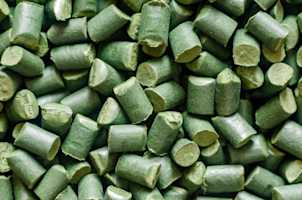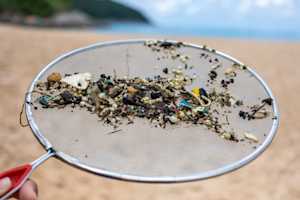Material Testing Insights
Read articles by our experts and guest authors on the practical implications of regulations, scientific advancements, and the ideal uses of different analysis methods.
Top articles

PFAS regulations in the EU: overview of restrictions and compliance testing options
The use of toxic PFAS compounds has been regulated in the EU for over a decade, with restrictions getting stricter each year.

How to compare material testing laboratories – 10 aspects to consider
Read our tips on how to compare material testing laboratories and select the best-suited one for your testing needs.

In vitro biocompatibility tests: alternatives to animal testing in the development of medical devices
In vitro biocompatibility tests can be sufficient to show that low-risk medical devices are safe and compliant with EU regulations.
Comparison of thermal analysis techniques used in material characterization
Several techniques, such as DSC, TGA, and TMA, can be used for thermal analysis, depending on the studied properties, temperature range, and sample type.
Keep reading >

Guide to EU compliance testing of paper and board food contact materials
Manufacturers must choose an appropriate safety reference for testing paper and board FCMs, as there is currently no harmonized EU legislation.
Keep reading >

Surface roughness measurement of thin films: technique comparison
Several techniques, including AFM, XRR, and profilometry, can be used to obtain information on the roughness of thin films and semiconductor devices.
Keep reading >

Orthex saved 20% in testing costs and replaced three laboratories with Measurlabs
Savings originated from competitive pricing, but also from optimizing the testing procedure with expert support, thus cutting unnecessary analyses.
Keep reading >

Streamlining R&D and compliance: Measurlabs’ role in empowering Sulapac's growth
Getting all the required laboratory tests in one place enabled effective R&D for Sulapac. Now, testing helps them ensure the compliance of new product lines.
Keep reading >

Biodegradability and compostability testing by national and international standards
Companies should provide evidence, such as third-party laboratory test results, for biodegradability and compostability-related product claims.
Keep reading >

Feed testing rules and regulations in the European market
European feed manufacturers must ensure their products comply with regulations on labeling, authorized ingredients, and maximum contaminant levels.
Keep reading >

How Skandino’s partnership with Measurlabs helped accelerate their product launch
Skandino, a Finnish startup producing biobased children's tableware, turned to Measurlabs to have their products tested for safety and EU compliance.
Keep reading >

Medical device testing for 510(k) submission to the FDA
Product characteristics to be evaluated for 510(k) premarket submission include sterility, shelf life, biocompatibility, and mechanical performance.
Keep reading >

Semiconductor failure analysis: techniques and applications
Advanced techniques, such as cross-sectional SEM and TEM, SAM, and FTIR, can be used to complement routine checks in semiconductor failure analysis.
Keep reading >

New microplastic testing standard ISO 24187 sets guidelines for analysis
The standard lists several analysis methods for microplastic testing and defines size ranges that particles should be filtered into to get comparable results.
Keep reading >

In vitro biocompatibility tests: alternatives to animal testing in the development of medical devices
In vitro biocompatibility tests can be sufficient to show that low-risk medical devices are safe and compliant with EU regulations.
Keep reading >

The EU Green Claims Directive requires companies to provide more evidence for sustainability claims
Laboratory testing is key to substantiating green claims about biobased content, biodegradability, and compostability in accordance with the new directive.
Keep reading >

The potential of eDNA testing in environmental analysis
Advanced eDNA testing methods enable the detection of hundreds of animal species from a single water, soil, or sediment sample.
Keep reading >

Food supplements: summary of EU regulations and testing requirements
EU legislation sets a range of requirements for the ingredients allowed in food supplements, the presence of contaminants, and authorized health claims.
Keep reading >

Biocide regulations and testing in the EU
The EU Biocidal Products Regulation (BPR) sets detailed requirements for active substances, biocidal products, and biocide-treated articles.
Keep reading >

Cosmetics efficacy testing to support product claims
According to EU regulations, cosmetic product claims must be substantiated by robust evidence, such as clinical tests or customer perception studies.
Keep reading >

Food labeling requirements in Europe: a guide to compliance testing
In addition to compulsory food labeling, laboratory tests can be used to evidence voluntary claims about nutritional and health benefits.
Keep reading >

Overview of global & European POP testing regulations and compliance testing
The Stockholm Convention and the EU POPs Regulation aim to phase out Persistent Organic Pollutants to protect human health and the environment.
Keep reading >

Overview of the EU Toy Safety Directive: What are the requirements?
Manufacturers and importers must ensure the chemical, mechanical, and fire safety of toys in accordance with the Toy Safety Directive 2009/48/EC.
Keep reading >













